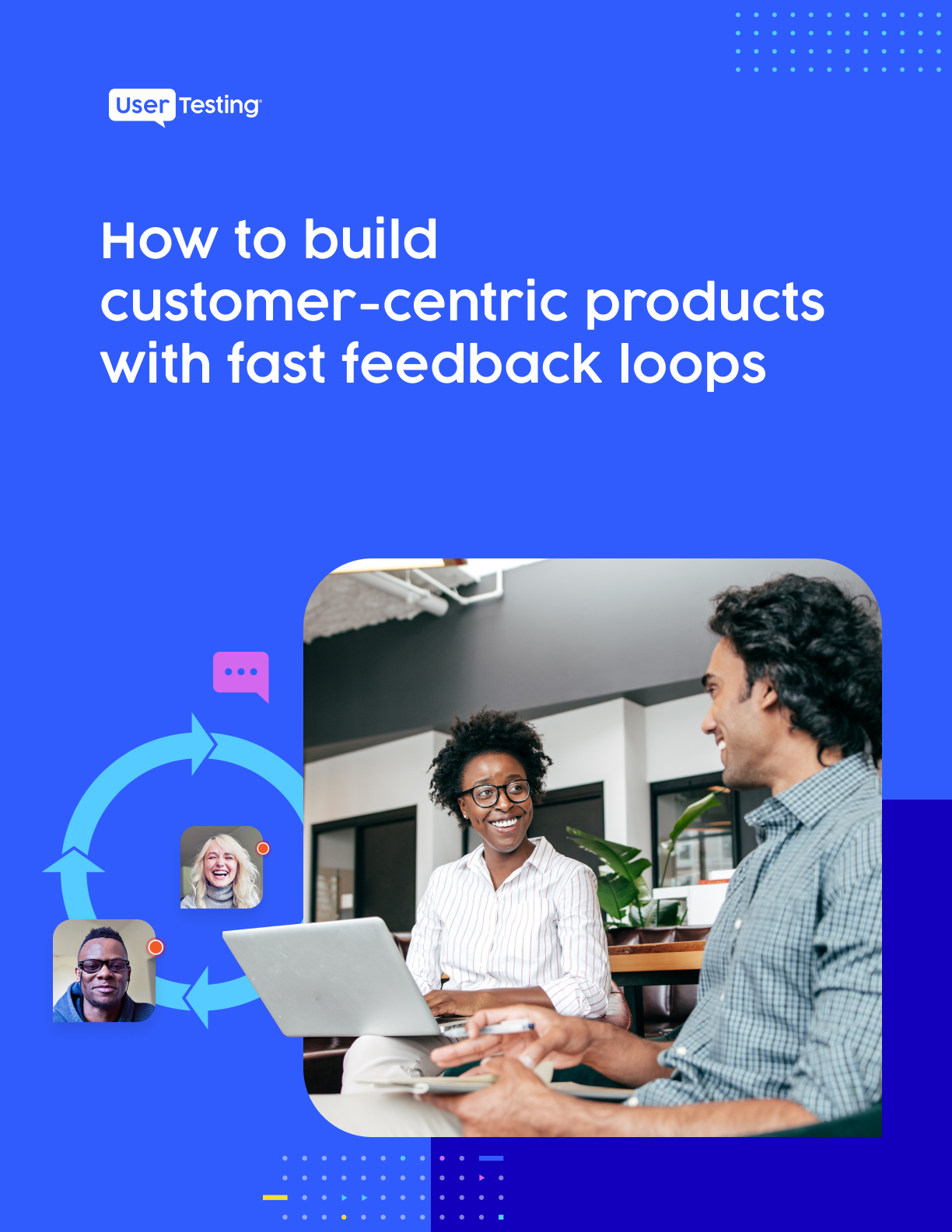
4 tips for healthcare product managers to turn feedback into action

When it comes to building healthcare products and experiences, it’s complicated. Not only do product managers need to adapt swiftly and confidently to meet the needs of multiple stakeholders, but there’s all the regulation to deal with too. Even the word “customer” is nebulous for healthcare designers and builders. You could be talking to patients, doctors, various healthcare professionals, administrators, and more. Not to mention stakeholders like federal regulators, investors, and even friends and family of patients. The list goes on.
At the end of the day, a lot of people depend on your products to do the job right. These stakeholders can all play a significant role in enhancing the patient experience and improving patient engagement.
During a roundtable discussion, Janelle Estes, UserTesting’s Chief Insights Officer, and Alexander Sheehy, Johnson & Johnson’s Sr. Director of Clinical Engineering, Robotics, and Digital Solutions, discuss areas of the design and development process that are critical to making human connections through your products.
Here are 4 tips for collecting feedback and turning it into actionable insights that will ultimately improve the experience for patients and everyone involved:
1. Understand your complex ecosystem of stakeholders
In healthcare, product managers and UX designers have a complex ecosystem of stakeholders that they have to consider. Most commonly, healthcare products are developed for and sold to doctors or hospitals in order to enhance the patient experience. However, the doctor is just one stakeholder in this diverse ecosystem. To design a product that truly addresses the needs of patients, doctors, and the technicians using them, you’ll need to expand your test audience.
To develop a holistic view of the experience, it’s vital to understand how various stakeholders interact with the product, the patient, and each other. Consider gathering feedback from a diverse group. Ideally, doctors, lab technicians, healthcare professionals, administrators, and even a patient’s family should be involved in your development process.
Here are some questions to consider:
- Are you solving the right problem?
- How will changes or updates affect everyone involved in the use of your product?
- How will people use it?
Before developing your product roadmap or individual enhancement, consider every stakeholder’s need to understand how they’ll interact with your product.
2. Make the most of every interaction with patients and healthcare professionals
Naturally, healthcare is a highly regulated industry, so getting access to customers or patients will come with some strings attached. From HIPAA compliance to ensuring impartiality during the decision-making process, observing and understanding patients, doctors, and various stakeholders in their natural environment is difficult. Under these constraints, you’ll need to identify every possible opportunity for feedback, capitalize on it, and stretch its use out as much as possible. The best way to do this is through a solution-agnostic approach.
Often, the problems that we think we’re solving are not the ones closest to the patient’s needs. Whether observing patients and healthcare professionals in their natural environments or collecting their perspectives remotely, don’t enter the situation with a particular solution to a problem in mind.
Instead, do your research with a problem-space mindset. This way you can identify gaps in your product you never knew existed.
3. Bake patient and stakeholder feedback into your process
At the end of the day, patient engagement is the key to your success and the success of everyone in healthcare. As a product manager or UX researcher, your job is to provide context. But, there’s no replacement for the actual voice of someone using your product or engaging with its experience.
As much as possible, share undoctored (no pun intended) feedback right from the source within your department so your team can benefit from every insight available.
In product development, it’s important to create cross-functional partnerships with fast feedback loops. This way, decisions are based on iterative feedback rather than assumptions made from old or unrelated data. To do this effectively, remove filters between your audience and your product teams.
See how Total Brain, a mental health and fitness platform, leverages remote feedback to listen to their users share their own experience to design a product with a 91% user satisfaction score.
4. Crystalize feedback in a meaningful way
So you have feedback, but it’s not being used? More often than not, the teams you interact with understand that customer experience matters, but they don’t always know what to do with the information they have.
The challenge for UX designers and product managers in healthcare involves crystalizing feedback in a meaningful way. That’s how you get actionable insights.
Typically, product feedback is cut and dry. However, in healthcare, there are quality system processes that can be layered and difficult to work within.
Do you find that what a patient experiences has a different meaning in different silos? For example, the way an engineer thinks about feedback may be different than how an account manager or a marketer thinks about it.
As product managers and UX designers, part of your job is to distill feedback so that any person interacting with it can understand the context of what the user is saying. Use a common language to ensure all teams understand the insight and can leverage it effectively in their roles. It might be helpful to break down the feedback into actionable insights per team.
Building empathy in healthcare is a team effort
In the end, your goal is to provide an unparalleled experience for your users. However, the weight of this effort can’t rest on the shoulders of one person or team. Ensuring that the feedback you collect is actionable for all teams involved, you’ll be one step closer to redefining how you build products and improve the patient experience.
In this Article

How to build customer-centric products with fast feedback loops
How to build customer-centric products with fast feedback loops





